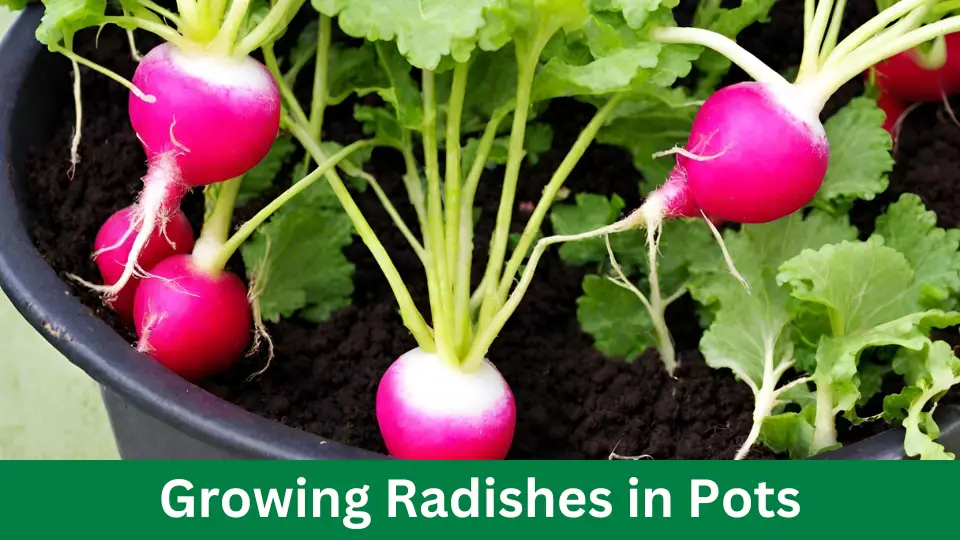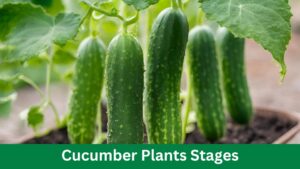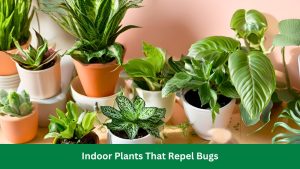
Growing Radishes in Pots : Tips for Successful Gardening
Can be quickly growing radishes in Pots. Choose a pot with good drainage and well-draining soil to ensure successful growth.
When growing radishes in pots, selecting a suitable container and soil is essential. Potted radishes can thrive and provide a bountiful harvest with proper care and attention. Whether you’re short on garden space or want fresh radishes outside your door, growing them in pots is a convenient and rewarding option.
This article will provide all the essential information you need to grow radishes in pots successfully. It will cover choosing the right pot and soil to care for your radish plants throughout their growth cycle. Whether you’re an experienced gardener or just starting, this guide will help you harvest Growing Radishes in Pots.
Choosing The Right Containers
Growing radishes in pots can be a rewarding experience, especially for those with limited space. However, selecting the right containers is crucial for the success of this endeavor. This section will delve into the key factors to consider when choosing containers for growing radishes in pots.

Consider Size And Depth
The size and depth of the containers play a pivotal role in the growth and development of radishes. Remember that radish roots need ample space to expand, so opt for containers at least 6 inches deep. This will provide enough room for the roots to thrive and for the radishes to develop properly.
Evaluate Drainage Options
Proper drainage is essential for preventing waterlogging, which can hinder the growth of radishes. When choosing containers, ensure they have adequate drainage holes to allow excess water to escape. Consider using pots with saucers to catch drainage water while allowing air circulation to the roots.
Selecting The Appropriate Material
When it comes to the material of the containers, choose durable options that provide insulation for the roots. Terra cotta, plastic, or wooden containers are popular choices.
Each material has advantages, so consider factors such as durability, insulation, and aesthetics when selecting.
Preparing The Soil Mix
Preparing the soil mix for growing radishes in pots is crucial for ensuring healthy plant growth and a bountiful harvest. Understanding the specific soil requirements of radishes, blending the right components, and adding nutrient-rich amendments are critical aspects of soil preparation that can contribute to the success of your radish cultivation.

Understanding Radish Soil Requirements
Radishes thrive in well-draining, fertile soil with a pH level between 6.0 and 7.0. They require loose and friable soil to allow their roots to penetrate easily.
Additionally, radishes prefer soil rich in organic matter, providing essential nutrients for robust growth and development.
Blending Soil Components
Creating the ideal soil mix for radishes involves blending different components to achieve the desired texture and nutrient content. A common soil mix for growing radishes in pots includes a well-balanced combination of garden soil, compost, and perlite.
The garden soil provides the base structure, while the compost enriches the mix with organic matter, and the perlite facilitates proper drainage and aeration.
Adding Nutrient-rich Amendments
For optimal growth, it’s essential to incorporate nutrient-rich amendments into the soil mix. This can be achieved by adding organic fertilizers such as well-decomposed manure, bone meal, or fish emulsion.
These amendments supply essential nutrients to the radishes, promoting healthy foliage and root development throughout their growth cycle.
Planting Radish Seeds
Planting radish seeds is a simple and rewarding process that can be done easily in pots. With the right techniques and care, you can enjoy a bountiful harvest of crisp, flavorful radishes. Here’s what you need to know to ensure successful seed planting, from proper spacing to watering techniques.

Ensuring Proper Spacing
When planting radish seeds in pots, it’s essential to ensure proper spacing to allow the radishes to grow and develop without competition. Space the seeds approximately 1-2 inches apart to give them ample room to thrive.
Sowing Depth Guidelines
Radish seeds should be sown at a depth of about half an inch to three-quarters of an inch. This depth allows the seeds to establish good contact with the soil, promoting strong and healthy germination. Ensure the soil is well-drained to prevent waterlogging, which can hinder germination.
Watering Techniques
When it comes to watering radish seeds, consistency is key. Keep the soil moist but not waterlogged, as excessive moisture can lead to rot and poor growth. Water the seeds gently to avoid displacing them, and be mindful of the pot’s drainage to prevent water buildup.
Caring For Radish Plants
Caring for radish plants ensures a bountiful harvest of crisp, vibrant radishes. From monitoring the moisture levels to managing pests and diseases, proper care is essential to grow radishes in pots successfully.
This section will delve into the essential aspects of caring for radish plants in pots, including monitoring moisture levels, implementing fertilization practices, and managing pests and diseases.
Monitoring Moisture Levels
Maintaining appropriate moisture levels is vital for the healthy growth of radishes in pots. Overwatering can lead to rotting, while underwatering can result in stunted growth.
To monitor moisture levels effectively, consider using a moisture meter to gauge the soil’s moisture content.
Regularly check the soil’s moisture by inserting your finger into the soil until the first knuckle. If the soil feels dry, it’s time to water the radish plants.
Implementing Fertilization Practices
Fertilization is essential for providing the nutrients for radish plants to thrive in pots. Implement organic fertilizers rich in nitrogen, phosphorus, and potassium to support healthy growth. Fertilize the radish plants sparingly, as over-fertilization can lead to excessive foliage growth at the expense of developing radishes.
Additionally, consider incorporating well-decomposed compost into the soil to enhance fertility and support robust plant growth.
Managing Pests And Diseases
Preventing and managing pests and diseases is critical for radish plants in pots. Keep a vigilant eye on common pests such as aphids, flea beetles, and root maggots, and promptly mitigate their impact. To deter pest infestations, utilize natural pest control methods, such as introducing beneficial insects or using neem oil.
Furthermore, maintain adequate air circulation around the plants and avoid waterlogging, as these practices prevent diseases such as damping and powdery mildew.
Harvesting And Enjoying Fresh Radishes
Radishes are a delicious and versatile garden favorite, with a quick and simple growing cycle that makes them an ideal candidate for container gardening. Watching your radishes mature and reach the optimal harvest time can be a rewarding experience. Once you have harvested your radishes, it’s time to savor their crisp, peppery flavor.
Let’s explore the process of harvesting radishes and how to make the most of enjoying these fresh, vibrant vegetables.

Determining Optimal Harvest Time
Determining the perfect moment for harvesting radishes is essential to ensure they are at their peak flavor and texture. Radishes are typically ready to harvest 3-4 weeks after planting, depending on the variety. Keep an eye on the size of the radish bulbs and pay attention to their color.
Harvest when the bulbs are around 1 inch in diameter and have a vibrant color, typically red, pink, or white, depending on the variety. Overly mature radishes may become pithy and lose their crispness, so it’s best to harvest them promptly when they reach the desired size.
Storage And Preservation Tips
Storing radishes in the refrigerator is recommended to retain their freshness and crisp texture. After harvesting, remove the leafy tops and store the roots in a perforated plastic bag in the crisper section of the refrigerator.
This will help to maintain their moisture and prevent wilting. Radishes can typically be stored in the refrigerator for up to two weeks. Additionally, excess radishes can be pickled to prolong their shelf life and add a tangy flavor to your dishes.
Culinary Uses And Recipes
Radishes are versatile to countless culinary dishes, adding a refreshing crunch and peppery kick to salads, sandwiches, and more.
You can slice them and sprinkle them with a bit of sea salt for a quick and healthy snack or incorporate them into your favorite recipes. From radish and cucumber salads to radish slaws and even roasted radishes, there are numerous ways to enjoy these vibrant vegetables. Here’s a simple recipe to get you started:
- Crispy Radish and Herb Butter
Ingredients:
- 1 bunch of fresh radishes, thinly sliced
- 3 tablespoons of unsalted butter, softened
- 1 tablespoon of finely chopped parsley
- Salt and pepper to taste
Instructions:
- Combine the softened butter and chopped parsley in a bowl, then season with salt and pepper.
- Serve the herbed butter with the thinly sliced radishes for a delightful and flavorful appetizer or snack.
Frequently Asked Questions Of Growing Radishes In Pots
How To Choose The Right Pot For Growing Radishes?
To choose the right pot for growing radishes, opt for a container at least 6 inches deep with good drainage. Ensure the pot is large enough to accommodate the radish roots, and consider using a lightweight material for more effortless mobility.
What Type Of Soil Is Best For Growing Radishes In Pots?
The best soil for growing radishes in pots is well-draining, loose, and rich in organic matter. A good potting mix with added compost or well-rotted manure will provide the nutrients for healthy radish growth.
When Is The Best Time To Plant Radishes In Pots?
The best time to plant radishes in pots is in early spring or late summer when the weather is cooler. Radishes prefer cooler temperatures for ideal germination and growth, so planting them during these seasons will yield better results.
How Often Should Radishes In Pots Be Watered?
Pot radishes should be watered regularly to keep the soil moist but not soggy. Aim to water them deeply at least once a week, adjusting the frequency based on environmental factors such as temperature and humidity.
Conclusion
Growing radishes in pots is a feasible and rewarding option for urban gardeners. You can enjoy a bountiful harvest of crispy, flavorful radishes with the right soil, adequate sunlight, and regular watering. Following the tips in this post, you can successfully grow radishes in pots and add a fresh, homegrown touch to your meals.
Video Source Link: https://www.youtube.com/watch?v=qnxAljYaGVw



